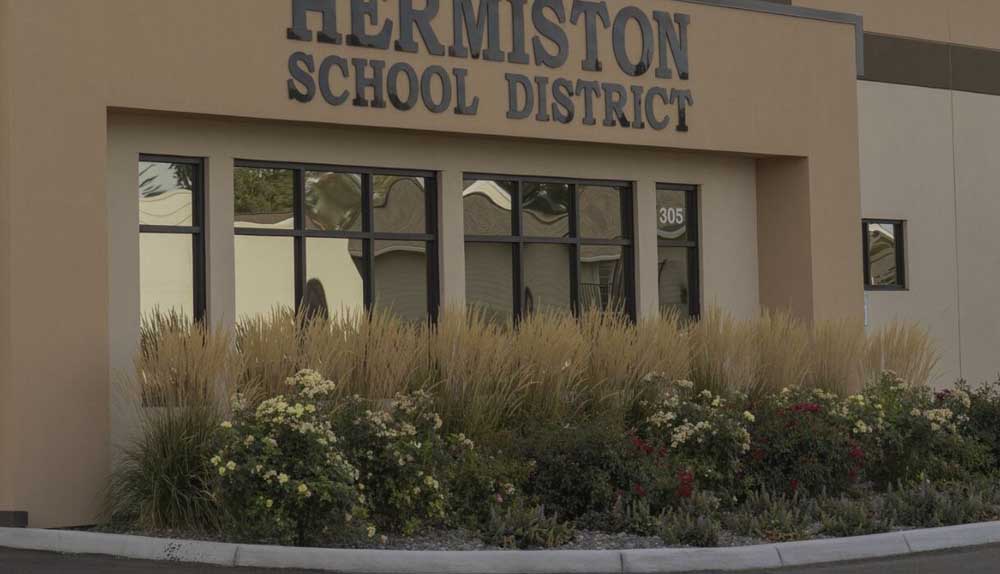Farmers fight bike path on old rail route
Published 5:20 pm Wednesday, June 18, 2014
MONROE — The future of a former rail line that runs through fields, farms and a national wildlife refuge between Monroe and Corvallis has sparked a fierce controversy in rural Benton County.
Some county residents would like to see the 60-foot-wide, 18-mile-long right of way transformed into scenic trail for cyclists and hikers.
But that concept has drawn virulent opposition from the farmers and ranchers along the corridor, who say such a path would be incompatible with their agricultural work and would lead to vandalism and trespassing on their land.
After much debate, the Benton County Board of Commissioners last fall voted 2-1 to buy the right of way — known as the Bailey Branch line — for $486,000, using reserves from its property tax-supported general fund. The line, once used to ship products from local farms and sawmills, had been dormant for six years at the time, with its owner, Union Pacific Railroad, struggling to find a buyer at its asking price.
The county purchased only the right of way; Union Pacific kept the rails and ties, which it then sold to another company. Most of the tracks were dismantled this year. The county’s purchase covers an 11-mile stretch that runs from Monroe to about six miles south of Corvallis, and a seven-mile spur that runs west from Monroe to unincorporated Dawson.
For the purchase, the county used a federal law designed to maintain a rail line’s abandoned right of way with an interim public trail use. That process, known as “railbanking,” allows the “preservation of railroad corridors for possible future rail use,” according to the federal Surface Transportation Board, which oversees such agreements.
Rails-to-Trails Conservancy, a nonprofit group based in Washington, D.C., that helps facilitate those agreements, estimates that more than 20,000 miles of former rail lines have been converted to trails nationwide, with 9,000 miles of potential trails waiting to be built.
In southern Lane County, the 15-mile Row River Trail — a former rail spur — has become a magnet for bicyclists and joggers. It opened in 1998.
Benton County leaders say the goal of the purchase was to preserve the right of way for a future shipping or commuter rail line, however, not to build a trail.
Commissioner Linda Modrell, a key supporter of the purchase, says the county first tried for several years to maintain a viable rail operation on the line after Union Pacific halted service.
“When it became clear that it was going to be abandoned, I went to see what could be done to preserve the right of way,” she said.
Purchasing completely new rights of way through private property for rail lines is “incredibly expensive,” Modrell said. There is a clear public interest in preserving existing rail corridors for the long term, she argues.
“We don’t have the population to support this (rail line) now,” she said. “But in the future, it will be different…. Freight is only going to increase, and that’s going to increase truck traffic on Interstate 5, and all the emissions that come with that.
“You’re not going to get rail back if you don’t preserve these right of ways.”
Seeking public comment
But publicly, county leaders haven’t made clear what they plan to do with the line in short-term, until a rail proposal materializes.
Last winter, Dennis Aloia, the county’s chief operating officer, urged the board at a meeting to formulate a tangible management plan, according to a report in The Corvallis Gazette-Times.
“We need to be clear with the public about what our intentions are, rather than nebulous,” Aloia said at the meeting. “Is this going to be for trails? Is this going to be for rail?”
County staff members have since been “making an inventory” of the property and its bridges and trestles, as well as devising possible interim uses for the corridor, Modrell says. Next, the county will seek public comment over the summer months, with hopes of creating a management plan by August or September.
But the farmers whose land is bisected or bordered by the corridor believe there is little doubt the county ultimately wants to build a trail.
“They’re going to try to put in a bike path,” said David Horning, a cattle rancher who owns a 400-acre ranch between Monroe and Dawson. “This whole public process, it’s kind of a smokescreen.”
Added Frank Nusbaum, a nearby grass seed farmer: “The general attitude in our community is that (the trail) is going to happen.”
Larry Venell, a farmer who bought the five-mile stretch of the Bailey Branch just south of Corvallis in 2010 and had considered purchasing other parts of the line, agrees.
“If (county officials) were planning to keep the corridor for a rail line, they would have bought the (track) infrastructure too,” Venell said. “It’s so expensive to put tracks back in.
“As a railroad owner, I know it’ll never happen.”
Farmers anticipate trouble
A spokesman with the Surface Transportation Board — the federal agency that signed off on the Bailey Branch “railbanking” agreement — said that, while there is “no legal regulation” requiring a trail to be built, such agreements “come with the understanding that (the public agency) should be working towards that goal.”
A bike and pedestrian trail would be a major headache for neighboring farmers, Horning and Nusbaum say.
Unlike the infrequent, slow trains that used the line previously, a regular stream of cyclists could make it difficult and dangerous for farmers to take their cattle or heavy machinery across the corridor — which many of the farmers’ deeds allow them to do. Similarly, cyclists or pedestrians might complain or sue if they were hurt by pesticide sprays or dust clouds, Nusbaum said.
Added Horning: “People ride their bikes through one day and they think, ‘This is beautiful.’ We would have to live with it every day, with them being right on top of us.”
Venell said he also doesn’t believe a bike trail is compatible with the surroundings.
“It’s only going to set up one more instance of agriculture and the general public clashing,” he said. “Maybe that’s what people want.”
A boost for businesses
John Greydanus, a resident of nearby Alpine, says he’s a proponent of looking into the possibility of a trail.
“There are some legitimate, real concerns raised by the adjacent landowners,” he said. “But this is also a once-in-a-lifetime opportunity for the community.”
Greydanus, who has been involved in long-term planning for the rural area, said a trail could boost nearby wineries, restaurants and small businesses.
Greydanus added that, because no trail proposal has been advanced yet, the strong opposition by landowners is premature.
“They’ve jumped to a conclusion already; they’re opposing what they think it is,” he added. “People feel that something is going to be shoved down their throats. But that’s not going to happen….
“I think the county is interested in having a collaborative discussion.”
To find a compromise, Greydanus said the county could seek land swaps with farmers to find alternative, less obtrusive paths for a trail, for example.
Pointing to the Row River Trail near Cottage Grove or the Centennial Trail near Spokane, Greydanus said “any trail system has run up against these issues (with landowners) at first… but they’ve often been overcome.
“We may ultimately decide as a community that we don’t want this,” he said. “But we need to at least have the discussion.”
Lawsuit could follow
Commissioner Modrell, who is leaving office at the end of the year, said her preference would be “to mothball this whole thing for the next 15 to 20 years” while doing only minimal upkeep on the corridor. The county is working on another trail between Albany and Corvallis, and its focus should be on that, she said.
Still, Modrell added, “This is a big bicycle area. And people who wouldn’t even use (a possible Bailey Line trail) really like the idea.”
Should the county ultimately decide to pursue the trail concept, both Horning and Nusbaum said they would consider suing.
In a somewhat related situation, the U.S. Supreme Court ruled 8-1 in March that a government easement previously used for a railroad corridor expired when the railroad stopped using it and couldn’t be preserved for a trail. The case centered on Wyoming’s Medicine Bow Rail Trail.
The fallout from that ruling is still unknown. But it is expected to lead to more legal challenges of different rail-to-trails projects across the nation and potential payouts from the federal government to maintain those trail rights of way.
The Supreme Court ruling doesn’t apply to the Bailey Branch situation, however, according to Benton County officials.
Horning, the rancher, says that may be true. But he added that the deeds of at least two of the affected landowners state that the right of way would be eliminated, should the rail line be abandoned.
“Our situation clearly has a similarity to the case in Wyoming,” he said, “but the county won’t acknowledge the issues with the deeds. It’s probably going to end with a legal battle, at taxpayers’ expense.”
The high tensions around the plans for the corridor could have another financial cost for Benton County.
The deeds of 36 landowners on the corridor have some language in them requiring the corridor owner to build and maintain fences on either side of the right of way. At a meeting in April, Benton County attorney Vance Croney told the county commissioners that he believed only 13 of those deeds remained binding today, for a number of different reasons.
Since the county purchased the line, an attorney for at least one of those landowners has contacted the county about building the required fences.
Several other landowners who don’t have fences could be entitled to ask the county to build fences on their land, Croney told the commissioners at the April meeting.
Emails to saul at saul.hubbard@registerguard.com . Follow him on Twitter @SaulAHubbard .





